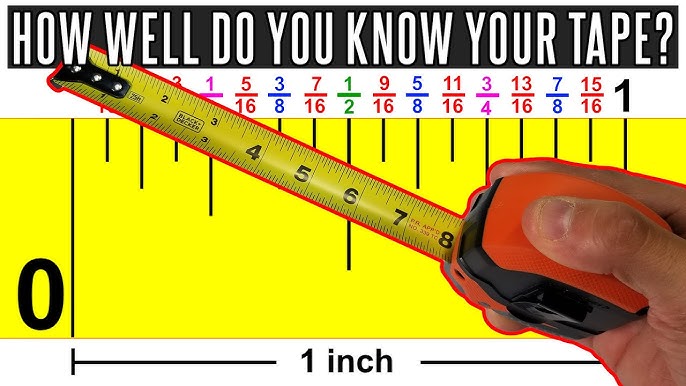Understanding Measurement: Converting 8mm to Inches
When it comes to measurements, particularly in fields such as engineering, construction, and crafting, understanding how to convert between different units is essential. One common conversion is from millimeters (mm) to inches. This article will specifically focus on the conversion of 8 millimeters to inches, providing detailed explanations, practical applications, and additional information about the metric and imperial systems.
The Basics of Measurement Units
Measurement is a fundamental aspect of science, engineering, and everyday life. Different regions and industries use various systems of measurement. The two most common systems are the Metric System and the Imperial System.
Metric System
- Definition: The metric system is a decimal-based system of measurement used by most countries around the world. It includes units such as meters, liters, and grams.
- Common Units:
- Length: millimeters (mm), centimeters (cm), meters (m)
- Volume: milliliters (ml), liters (L)
- Mass: grams (g), kilograms (kg)
Imperial System
- Definition: The imperial system, also known as the customary system, is primarily used in the United States and a few other countries. It includes units such as inches, feet, and pounds.
- Common Units:
- Length: inches (in), feet (ft), yards (yd)
- Volume: fluid ounces (fl oz), pints (pt), gallons (gal)
- Mass: ounces (oz), pounds (lb)
Conversion from Millimeters to Inches
To convert millimeters to inches, you can use the following conversion factor:1 inch = 25.4 millimetersTo convert from millimeters to inches, you can use the formula:
Converting 8 Millimeters to Inches
Using the conversion formula, we can convert 8 millimeters to inches:
Thus, 8 millimeters is approximately 0.315 inches.
Practical Applications of Millimeter to Inch Conversion
Understanding how to convert millimeters to inches is important in various fields:
- Construction and Carpentry: Many building plans and specifications may use different measurement systems. Accurate conversions ensure that materials fit correctly.
- Manufacturing: In manufacturing, precise measurements are crucial for quality control. Many parts may be specified in millimeters, while machinery operates in inches.
- Crafting and DIY Projects: Hobbyists and crafters often encounter both metric and imperial measurements in patterns and plans.
- Medical Equipment: Medical devices and tools may use millimeters for precision, while user manuals might present dimensions in inches.
Summary Table of Common Conversions
Here’s a table summarizing common millimeter to inch conversions for quick reference:
| Millimeters (mm) | Inches (in) |
|---|---|
| 1 mm | 0.03937 in |
| 5 mm | 0.19685 in |
| 8 mm | 0.315 in |
| 10 mm | 0.3937 in |
| 25 mm | 0.98425 in |
| 50 mm | 1.9685 in |
| 100 mm | 3.937 in |
Importance of Accurate Measurements
Accurate measurements are vital for achieving desired results in any project. Whether you are constructing a building, designing a product, or creating art, understanding the correct dimensions ensures that everything fits together as intended.
Conclusion
In conclusion, converting 8 millimeters to inches results in approximately 0.315 inches. This conversion is essential in various fields, including construction, manufacturing, and crafting. Understanding how to navigate between metric and imperial systems can significantly enhance precision and effectiveness in your work.
FAQ Section
Q1: Why are there different measurement systems?
A1: Different measurement systems evolved based on historical, cultural, and practical needs. The metric system is based on decimal units, making it easier for scientific calculations, while the imperial system is rooted in traditional measurements.
Q2: How do I convert other millimeter measurements to inches?
A2: Use the formula: Inches = Millimeters / 25.4. For example, to convert 20 mm to inches: 20 mm / 25.4 = 0.7874 inches.
Q3: Are there any tools available for converting measurements?
A3: Yes, there are numerous online calculators and conversion tools available that can quickly convert between metric and imperial units.
Q4: What is the significance of knowing both measurement systems?
A4: Knowing both systems is crucial for professionals working in international contexts, ensuring compatibility and accuracy in designs and specifications.
Q5: Can I use a ruler to measure in both millimeters and inches?
A5: Yes, many rulers have both metric and imperial markings, allowing for easy measurement in either system.For further information on measurement systems and conversions, you can refer to the Wikipedia page on Units of Measurement.



